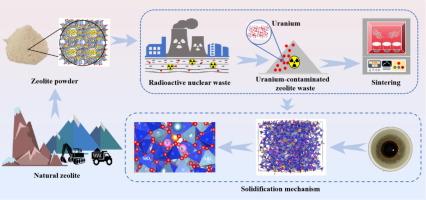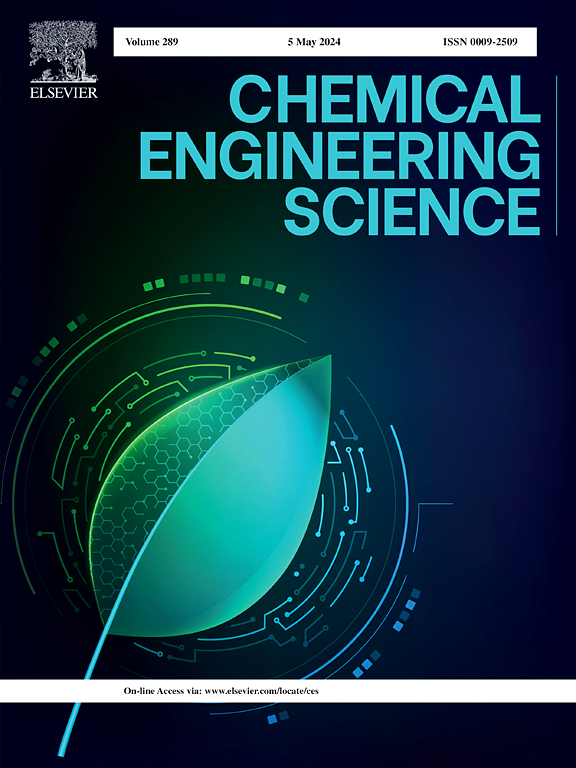Investigation of uranium-contaminated zeolite solidification mechanism: Experiments and molecular dynamics simulation
IF 4.1
2区 工程技术
Q2 ENGINEERING, CHEMICAL
引用次数: 0
Abstract
The uranium (U)-contaminated zeolite waste will influence humans and related ecosystems. Therefore, the contaminated zeolite waste should be treated safely to achieve the effective immobilization of radionuclides. In this work, the U-contaminated zeolite samples were solidified into glass and glass–ceramic forms. The phase, micromorphology, chemical state, and chemical stability of zeolite waste samples were studied. When the U doping amounts were 0–50000 μg/g, the density values of sintered samples increased from 2.13 to 2.48 g·cm−3. With the product consistency test method, the NR (normalized leaching rate) of U remained approximately 10−6 g·m−2·d−1 at 42nd day, suggesting that the samples have excellent chemical durability. Molecular dynamics simulation results suggested that the solidified body consisted of [AlO4] and [SiO4] tetrahedrons and [AlO4] tetrahedrons were less rigid than [SiO4] tetrahedrons. This study will offer valuable insight into the management of radioactive zeolite waste during the subsequent stage.

求助全文
约1分钟内获得全文
求助全文
来源期刊

Chemical Engineering Science
工程技术-工程:化工
CiteScore
7.50
自引率
8.50%
发文量
1025
审稿时长
50 days
期刊介绍:
Chemical engineering enables the transformation of natural resources and energy into useful products for society. It draws on and applies natural sciences, mathematics and economics, and has developed fundamental engineering science that underpins the discipline.
Chemical Engineering Science (CES) has been publishing papers on the fundamentals of chemical engineering since 1951. CES is the platform where the most significant advances in the discipline have ever since been published. Chemical Engineering Science has accompanied and sustained chemical engineering through its development into the vibrant and broad scientific discipline it is today.
 求助内容:
求助内容: 应助结果提醒方式:
应助结果提醒方式:


